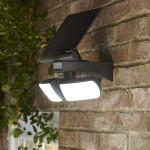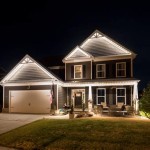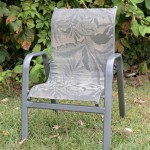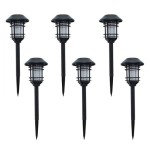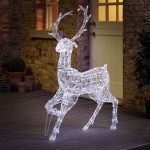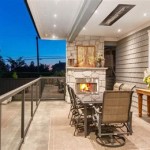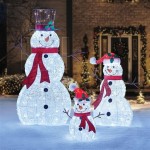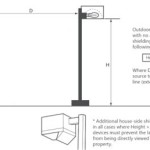Outdoor 110v Lighting: A Comprehensive Guide
Outdoor lighting enhances the aesthetic appeal, security, and functionality of residential and commercial properties. Among the various options available, 110v outdoor lighting systems offer a balance of power, efficiency, and safety, making them a popular choice for a wide range of applications. This article provides a comprehensive overview of 110v outdoor lighting, covering its benefits, applications, installation, safety considerations, and maintenance.
110v, or 120v as it is sometimes referred to (both terms generally represent the North American standard voltage), is the standard electrical voltage for most homes in the United States and Canada. This readily available voltage makes 110v lighting systems relatively simple to integrate into existing electrical infrastructure without the need for specialized transformers in many situations. While lower voltage systems, such as 12v or 24v, are also used outdoors, they sometimes require transformers to step down the voltage from the main electrical supply. The absence of these transformers in many 110v applications simplifies installation and reduces the potential for transformer failure.
The choice of voltage depends on various factors, including the size of the area to be illuminated, the desired brightness, the type of fixtures selected, and local electrical codes. Understanding the advantages and disadvantages of 110v systems compared to other voltage options is crucial for making informed decisions about outdoor lighting.
Advantages of 110v Outdoor Lighting
One of the most significant advantages of 110v outdoor lighting is its direct compatibility with standard household electrical systems. This eliminates the need for step-down transformers, which simplifies installation and reduces the overall cost. Furthermore, 110v systems typically offer a wider range of fixture options compared to lower voltage systems. This expanded selection allows for greater design flexibility and the ability to choose the perfect lighting solution for any outdoor space.
Another key advantage is the consistent brightness and performance across longer distances. Lower voltage systems experience voltage drop over extended cable runs, which can lead to dimming and inconsistent light output. 110v systems are less susceptible to voltage drop, ensuring consistent brightness even at the far end of a long run of lighting fixtures. This is particularly important for larger properties or commercial applications where lighting fixtures are spread out over a considerable area.
Additionally, 110v lighting fixtures generally offer higher wattage options, enabling the use of brighter and more powerful lights. This is beneficial for security lighting, floodlighting, and illuminating large outdoor areas. The higher wattage capacity also allows for the use of more sophisticated lighting features, such as dimming capabilities and smart home integration.
Applications of 110v Outdoor Lighting
The versatility of 110v outdoor lighting makes it suitable for a wide range of applications. Residential properties benefit from 110v lighting for enhancing curb appeal, increasing security, and creating inviting outdoor living spaces. Common applications include pathway lighting, landscape lighting, porch lighting, and deck lighting. These fixtures provide illumination for safe navigation, highlight architectural features, and extend the usability of outdoor areas after dark.
Commercial properties also rely heavily on 110v outdoor lighting for safety, security, and aesthetics. Parking lot lighting, building perimeter lighting, and signage lighting are essential for ensuring the safety of employees and customers, deterring crime, and promoting brand visibility. Landscape lighting around commercial buildings enhances the overall appearance of the property and creates a welcoming atmosphere.
Specific types of 110v outdoor lighting fixtures include floodlights, spotlights, lanterns, string lights, and bollard lights. Floodlights are ideal for illuminating large areas, such as parking lots or sports fields, while spotlights are used to highlight specific objects or architectural features. Lanterns provide decorative ambient lighting for patios and walkways, while string lights add a festive touch to outdoor gatherings. Bollard lights are commonly used to illuminate pathways and driveways, providing both safety and aesthetic appeal.
The choice of fixture depends on the specific lighting needs of the property and the desired aesthetic. Considerations include the brightness required, the beam angle, the color temperature, and the overall style of the fixture.
Installation and Safety Considerations for 110v Outdoor Lighting
Proper installation is crucial for the safe and reliable operation of 110v outdoor lighting systems. It is strongly recommended that installation be performed by a qualified electrician, particularly when dealing with hardwired connections to the main electrical supply. Incorrect wiring can lead to electrical shock, fire hazards, and damage to the lighting fixtures.
Before beginning any installation work, it is essential to disconnect the power supply to the circuit being worked on. This can be done by switching off the circuit breaker at the main electrical panel. Additionally, it is important to consult local electrical codes and regulations to ensure compliance. These codes specify the requirements for wiring, grounding, and the use of weatherproof enclosures.
When installing outdoor lighting fixtures, it is essential to use appropriate wiring and connectors that are rated for outdoor use. These components are designed to withstand exposure to moisture, UV radiation, and temperature extremes. Underground wiring should be buried at the proper depth to prevent damage from digging or other activities. Conduits can be used to protect underground wiring from physical damage.
Grounding is another critical safety consideration. All metal parts of outdoor lighting fixtures should be properly grounded to prevent electrical shock. Grounding provides a path for fault current to flow back to the electrical panel, tripping the circuit breaker and preventing a dangerous build-up of voltage. Ground fault circuit interrupters (GFCIs) should be installed in all outdoor circuits to provide additional protection against electrical shock.
Regular inspection and maintenance of outdoor lighting systems are essential for ensuring their continued safety and performance. Check wiring and connections for signs of damage or corrosion. Replace any damaged wiring or connectors promptly. Clean the lenses of lighting fixtures regularly to maintain optimal light output. Trim any vegetation that may be obstructing the light or interfering with the wiring.
Furthermore, it is crucial to ensure that all outdoor lighting fixtures are properly weatherproofed. This involves sealing any openings or gaps to prevent water from entering the fixture. Inspect the weatherproof seals regularly and replace them if they are cracked or damaged. Proper weatherproofing is essential for preventing electrical shorts and extending the lifespan of the lighting fixtures.
Choosing the right type of bulb is also important. LEDs (Light Emitting Diodes) are increasingly popular for outdoor lighting due to their energy efficiency, long lifespan, and durability. LEDs consume significantly less energy than traditional incandescent or halogen bulbs, reducing energy costs and extending the time between bulb replacements. They also produce less heat, making them safer to use in enclosed fixtures. If using halogen or incandescent bulbs, ensure they are rated for outdoor use and are compatible with the fixture.
Finally, it is advisable to use a timer or photocell to control outdoor lighting. Timers can be programmed to turn the lights on and off at specific times, while photocells automatically turn the lights on at dusk and off at dawn. These devices can help conserve energy and extend the lifespan of the lighting fixtures. They also provide added security by ensuring that the lights are always on when needed.
In summary, 110v outdoor lighting provides a reliable and versatile solution for illuminating residential and commercial properties. By understanding the advantages, applications, installation requirements, and safety considerations, property owners can make informed decisions about their outdoor lighting needs and ensure the safe and efficient operation of their lighting systems.

110v 220v Linkable Led Flood Light Fixtures Waterproof Portable Outdoor Temporary Lighting

12v 110v 220v 3w Outdoor Led Landscape Light Ip65 Garden Grass Lighting 6 Colors

Surnie 150ft 45m Flat Outdoor Rope Lights Waterproof 110v Soft Warm White Led Strip Light 2700 Leds Cuttable Connectable For Deck Patio Stairs Backyards Commercial Use Decor Lighting Com

110v 220v Ip65 Outdoor Decoration Lighting Smd5050 Smd2835 Led Strip Light For China Made In Com

Surnie 150ft Led Rope Lights Outdoor Waterproof 110v Daylight White Dimmable Flat Strip Light 6500k Cuttable Connectable For Stairs Deck Backyards Commercial Use Indoor Lighting Com

360 Round Led Neon Strip Rainbow Tube Light 220v 110v Ac Rgb Rope Ribbon Waterproof Flexible Lighting For Outdoor Decoration China

Hsc 110v 540 Leds Tube Rope Light Cuttable Outdoor Waterproof Led Strip Daylight White 6000k Flexible Lighting Suitable For Deck Patio Backyards Decor Com

3w 5w 10w Outdoor Garden Landscape Light Ac220v 110v Dc12v Led Lawn Lamp Cob Waterproof Lighting Path Spotlight Fruugo No

20w Outdoor Spotlight Led Landscape Lighting 120v Ac Waterproof Yard Spot Lights

50ft 360 Led Waterproof Rope Lights 110v Connectable Indoor Outdoor For Deck Patio Pool Camping Bedroom Decor Landscape Lighting And More White Shein Usa
